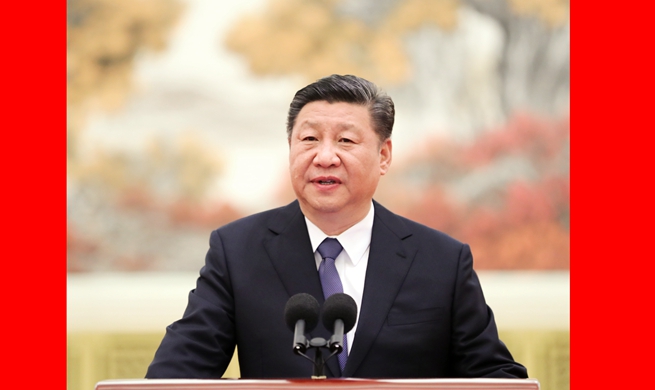CHENGDU, Feb. 21 (Xinhua) -- A century and a half after French zoologist Armand David became the first European to discover the giant panda, an officially-compiled chronicle on the mammal has been published to help improve comprehensive knowledge of the species.
The book is China's first complete sourcebook on the species, according to the Sichuan provincial local gazetteer office, the publisher.
The giant panda, that lives mainly in southwest China's Sichuan Province as well as neighboring Shaanxi and Gansu, is China's national treasure, cherished as a symbol of peace and friendship.
As the main habitat of giant pandas, Sichuan naturally shoulders the responsibility to make a detailed document on them, according to the publisher.
Besides archival research, panda experts who contributed to the chronicle have carried out extensive field research in cities and counties in Sichuan, including Ya'an, Baoxing and Tianxing.
They have made abundant collections of historical data by interviewing witnesses to important events involving the giant pandas.
It took 12 years for the editors to complete the 820,000-word book. The events chronicled in the book date between the end of the Neolithic period to 2005, mainly focusing on the period from 1950 to 2005.
The book chronicles elaborate details on China's native bear. According to the publisher, it records the origin, population and distribution patterns of the giant panda, as well as food crises they have gone through and rescue, and this will provide China and the world with references for wildlife protection and management.
There are more than 1,800 giant pandas in the wild in China, and the number of pandas bred in captivity reached 548 globally as of last November.
Historical records indicate that giant panda's first tour abroad may have happened in the early Tang Dynasty (618-907) when in the year 685, Wu Zetian, China's only empress, sent two "white bears" as a gift to Emperor Tenmu of Japan.
The worldwide popularity of the giant pandas has grown since Armand David introduced the creature to the west.
In 1939, Sun Mingjing, a Chinese motion-picture pioneer, recorded a giant panda in his documentary "A Glimpse of Xikang." It was the first appearance of the animal in a movie. Many film directors in China and overseas have since come to Sichuan to make videos of it.
Desmond Morris, then curator of mammals at the Zoological Society of London, outlined 20 factors in his 1981 book, "The Giant Panda," to explain the human obsession with the animal.
Besides movies and literature, images of the giant panda are often seen on stamps. China Post has issued several sets of panda-themed stamps since 1963, as have at least 14 other countries in Asia, Europe and America.
France's postal service company La Poste issued a commemorative stamp on the day in December 2017 when the first panda cub born in France got its name Yuan Meng, which means "dream comes true" literally.
La Poste put a new set of panda stamps on sale last Saturday.



















